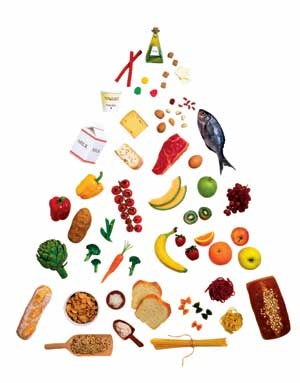Think about one of the strongest brands from Asia, and chances are that Singapore Airlines and its long-serving, almost iconic Singapore Girl easily come to mind. Singapore Airlines has consistently been one of the most profitable airlines globally, and has always had the reputation of a trendsetter and industry challenger. There are several good reasons for this. Most relates directly to the strong brand management driven primarily by the Singapore Airlines boardroom and top-management, and the healthy brand equity as the result of a dedicated, professional brand strategy throughout a diversified, global organisation.
The Singapore Airlines brand has been instrumental for the airline from the early start. It serves as one of the leading brand cases from Asia for other established brands as well as any aspiring brands. The Singapore Airlines brand is unique in the sense that the boardroom takes dedicated leadership of the brand strategy unlike many other Asian companies.
BackgroundSingapore Airlines (SIA) began in 1947 as Malayan (later Malaysian) Airlines in a joint venture between the Malaysian and Singapore governments, serving primarily the South East Asian region. In 1965, Singapore separated from Malaysia, and later the two governments agreed to set up separate airlines. Singapore Airlines was born in 1972.
Singapore Airlines was in a different position than most other airlines at the time. There were no domestic routes to serve it was forced to immediately start competing with international airlines for routes, getting access to airports, securing flight slots and landing rights, and attracting a new customer base. Unlike most state-owned entities, Singapore Airlines was subject to heavy competition from the onset and this tough start created a driving spirit to compete and also a dedication to branding, especially in the boardroom. These factors have prevailed within the organization since then, and served the airline very well as the following will illustrate.
Building the BrandSingapore Airlines decided on a fully branded product/service differentiation strategy from the very beginning. Innovation, best technology, genuine quality and excellent customer service were to become the major drivers of the brand.
Throughout the course of their 32-year history, Singapore Airlines has remained true to their brand attributes. They have pioneered many in-flight experiential and entertainment innovations, and strived to be best-in-class. SIA was the first to introduce hot meals, free alcoholic and non-alcoholic beverages, hot towels with a unique and patented scent, personal entertainment systems, and video-on-demand in all cabins. The company keeps driving innovation as an important part of the brand, and the cabin ambience and combined experience are key factors of their success.
On the technology side, Singapore Airlines still maintains the youngest fleet of aircraft amongst all major air carriers, and keeps to the stringent policy of replacing older aircrafts for newer, better models. They have always been first in line to take delivery of new aircraft types like Boeing 747 jumbo jets, Boeing 777, and they will become the first airline to fly the Airbus Super jumbo A-380 in 2006. Even the aircrafts are sub-branded like 747-Megatop and 777-Jubilee to further distinguish SIA and its brand from competitors. Singapore Airlines also flew Concorde between Singapore and London in the late 70’ties in collaboration with British Airways (BA). The aircraft was painted with SIA’s colours and logos on one side, and BA’s on the other, and it carried crew from both airlines.
The strategy behind the technology program is clear: It enhances cost efficiency to use the latest aircrafts and at the same time, Singapore Airlines uses these events for marketing purposes. An example of this was the new non-stop services to Los Angeles and New York launched in 2004, which attracted huge publicity in global media and kept the innovation promise of the brand alive. The special aircrafts for these long-range routes (Airbus A340-500) are sub-branded Leadership to further distinguish the brand promise.
Singapore Airlines recognizes that each innovation has a relatively short life span. Once other airlines adopt it, it is no longer considered “innovative”. Therefore, the airline continues to invest heavily in R&D, innovation and technology as an integrated part of the business strategy to further differentiate itself.
The Singapore GirlThe personalization of the Singapore Airlines brand is the mixed male and female cabin crew, where especially the flight stewardesses commonly referred to as Singapore Girls have become very well-known. SIA engaged French haute-couture designer Pierre Balmain at the inauguration of the airline in 1972. He designed a special version of the Malay sarong kebaya as the uniform which later became one of the most recognized signatures of the airline. A very designated and visual part of the entire brand experience.
The Singapore Girl strategy turned out to be a very powerful idea and has become a successful brand icon with an almost mythical status and aura around her. The Singapore Girl encapsulates Asian values and hospitality, and could be described as caring, warm, gentle, elegant and serene. It is a brilliant personification of SIA’s commitment to service and quality excellence. The icon has become so strong that Madame Tussaud’s Museum in London started to display the Singapore Girl in 1994 as the first commercial figure ever.
Singapore Airlines also runs one of the most comprehensive and rigorous training programs for cabin and flight crew in the industry to make sure the SIA brand experience is fully and consistently delivered.
The social status of the Singapore Girl has also reached near-celebrity in Asia. This has allowed Singapore Airlines to be highly selective in the recruiting process for talent which has added further to the strength of the brand icon and the myth around it.
Communicating the messageSingapore Airlines has been as consistent in its communication vehicles as in its brand strategy. The primary message “Singapore Airlines – A Great Way to Fly” has been consistently conveyed in exclusive print media and also in selected TV-commercials of very high production value to underline the quality aspirations of brand. All communication messages are featured through the iconic Singapore Girl in different themes and settings.
When Singapore Airlines recently launched their comfortable Space Bed seats in business class, they ran a 60-second commercial of a highly emotional and mythical character to underline the aspiration of the brand and the Singapore Girl, and to set their airline brand apart from competition.
Interestingly, Singapore Airlines has chosen to focus on one aspect of the experiential brand strategy – in-flight hospitality and warmth featured by the Singapore Girl – rather than trying to communicate the entire brand benefits through its messages. A dangerous trap, which many other brands often fall into in their efforts to communicate all at once. This has led to a focused and consistent message for SIA during the last 32 years. This in itself is a great achievement for any brand.
The Singapore Girl has contributed immensely to the success of Singapore Airlines’ brand strategy and its entire positioning around customer and service excellence.
Using the brand to drive revenuesWhile other airlines have also pursued high service/quality brand strategies, none has been able to match Singapore Airlines in consistency, commitment, and true permeation of the brand in every facet. SIA has been able to maintain their brand advantage by not wavering from their brand strategy. This is a particularly difficult position to maintain in a highly cyclical industry where the competition seems to react on a daily basis to changes in performance. This type of commitment takes dedication from the board, CEO and senior management team, and strong faith in the brand’s ability to pull through bad times. The management team and shareholders must maintain a longer term outlook to avoid making short-term, reactionary decisions which dilute the brand.
For example, pressure on US airlines stemming from low-cost carrier competition has caused a number of the full-service airlines to begin charging for on-board services which used to be free. Historically, business travellers were willing to pay a premium for full-service airlines, essentially because they provided these services. By abandoning their customer service strategy, even on restricted flights, the premium US airlines are diluting their brand in search of short-term profitability. This is creating a circular effect where the premium airlines are losing cost-sensitive customers to low-cost airlines, which causes them to reduce price to retain these customers. This in turn creates more cost pressure. This cost pressure causes them to start reducing the premium services which made them distinct from the low-cost airlines in the first place.
Singapore Airlines has been able to deliver some of the best results in the industry by avoiding this type of reactionary behaviour.
Developing cost advantagesSingapore Airlines’ brand strategy is, in theory, a relatively high-cost strategy. Each brand benefit requires significant investment, careful management and detailed implementation programs to live up to the brand promise. Singapore Airlines has carefully built a financial and fixed cost infrastructure which allows them to continue investing to support the brand while challenging the competition on costs.
First, the strong cash position allows Singapore Airlines to internally fund purchases of new equipment and airplanes, and limit interest costs. SIA is not locked into long-term leases, and can easily accommodate newer, more efficient equipment which minimizes maintenance costs and avoid aircraft downtime.
A second benefit of SIA’s infrastructure is the age of their fleet. Maintaining the youngest generation of aircrafts provides SIA with some of the lowest fuel costs in the industry. This is very significant since 15-20% of an airlines’ total costs derive from fuel. On top of this, SIA carefully hedges up to 50% of their fuel contracts two years in advance to avoid cyclical and often large volatility in fuel prices.
Finally, the financial and cash position has allowed SIA to weather the short-term dips in the industry better than the competition.
The brand delivers resultsSingapore Airlines has maintained its position as one of the best-known and best-performing brands in Asia, and remains one of the few consistent performers in an industry where established brands are struggling to stay alive. SIA has followed a very simple management formula to achieve outstanding results:
Revenues: Command a price premium through consistent brand benefits and avoid reactionary pricing behaviour in order to condition the customer not to wait for price matching.
Costs: Tight control of costs though ownership of the most cost-efficient aircrafts, hedging against fuel price increases, and agile management of the entire company etc.
Profits: Run the business with a long-term outlook. Be consistent. Stay true to the brand.
What is next for Singapore Airlines? The last three years has seen a dramatic shift in the airline industry. There have been major shakeouts and loose consolidation amongst premium, full-service players and a wide expansion in the low-cost carrier market – also in the closely regulated Asian airspace. Air travel has become a commodity and most major routes are saturated with fierce competition. The low-cost carriers have significantly influenced consumer behaviour for cheap price bargains among leisure travellers and increasingly among business travellers.
Singapore Airlines has already jumped ahead, launching their own carrier for local and short-haul routes, Tiger Airways, to stay at the forefront of competition. The aim is to avoid dilution of the core premium brand, Singapore Airlines.
Singapore Airlines strongly embedded positioning and commitment to the brand has positioned it well to compete in the new landscape. The challenge is to stay true to the brand and keep delivering on the fairly high-cost promise of quality, innovation and service. This requires heavy, on-going investments and healthy cash-flows which can only be achieved though a continuous price-premium strategy and satisfactory passenger load factors. In other words, customers’ perception of the price/value equation, their future buying behaviour (partly to be influenced by the low-cost carriers) and loyalty among other factors are crucial for the future.
In most industries, there are always segments willing to pay for quality brands. Therefore, the question is not whether there are customers in the market, but rather the ability for Singapore Airlines to constantly nurture the brand promise, keep innovating and capture the overall value of the brand in the minds of the customers.
The strong brand equity of Singapore Airlines is one of the most valuable assets for the company and its cash-rich balance sheet. Singapore Airlines is a leading business case from Asia demonstrating the importance of strategic branding, and they should serve as great inspiration for other Asian boardrooms trying to build and manage their own brands.
Singapore Airlines is among the top companies globally that is truly able to control the brand through every interaction and experience. SIA has become a hugely rewarded innovator and industry leader: A great way to fly.
http://www.venturerepublic.com/resources/Singapore_Airlines_-_An_Excellent_Asian_Brand.asp




